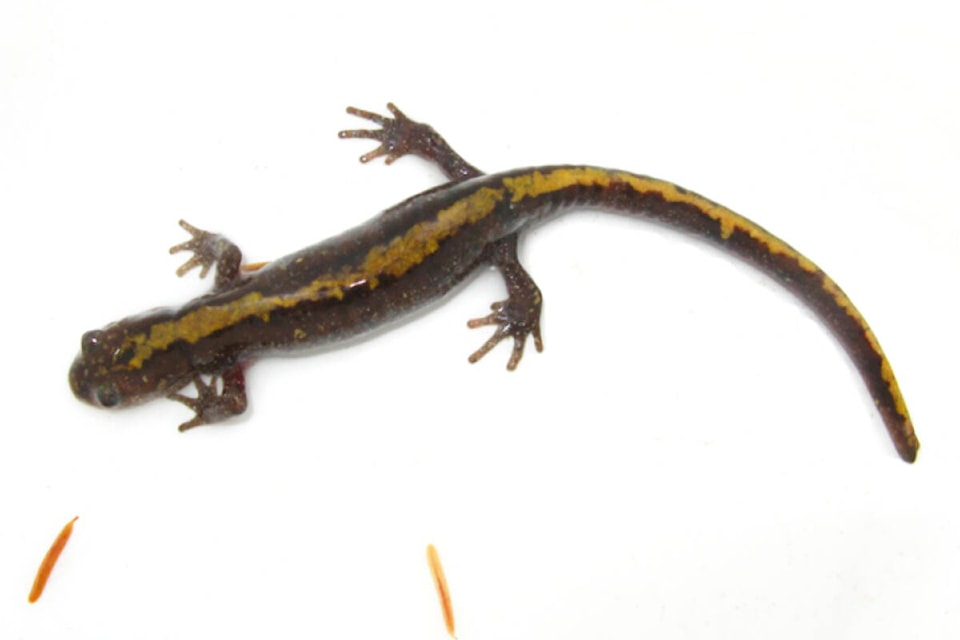A late-night ski at the Hallis Lake Ski trails was a recent surprise for James Meyer, who saw dozens of long-toed salamanders migrating to their breeding pools.
The Cariboo Ski Touring Club manager hit the trails lit up by lights on a relatively balmy evening Tuesday, March 22.
“I figured I would try to get one more in before the end of the season, and once I got out on the trails, I noticed some of the sticks were moving,” Meyer said with a laugh.
“So I took a closer look, and the whole area is just covered in little salamanders cruising across the snow.”
When Meyer got home, he checked Google to learn more about what he had been looking at.
He concluded the slender salamanders with dark grey to black skin flecked with golden speckles were long-toed salamanders.
The amphibian species makes its home in all kinds of habitats across B.C. and gather at breeding ponds before the ice has completely disappeared, notes the province’s Ministry of Environment.
Read More: Boo, the Golden-area grizzly bear, wakes up to the smell of spring
“It’s something I’ve never seen in all my years of cruising around in the bush; I’ve never seen that many salamanders in one place, so it was definitely something to see,” Meyer said.
Because he did not have his camera with him on Tuesday, he hoped to head out for another late-night ski the following night and grab photos of the long-toed salamanders.
”It’s getting to be the end of the season, but as long as it’s above zero, the skiing is actually really enjoyable,” he said.
“It was a really nice ski Tuesday night. It was nice and warm, it wasn’t too icy or anything, and all the trails still have snow, so there were no dirt patches or anything like that—it’s definitely worth coming out for a ski still.”
Other animals reportedly seen along the trails include deer and moose and a bobcat with a cub.
In the spring, there are usually many garter snakes hanging out around the lodge.
If you happen to see the long-toed salamanders on Hallis Lake Ski Trails, Meyer recommends leaving them be.
“It’s probably tough enough crawling around on the snow being a lizard, just give them a little bit of space,” he said.
“Enjoy them from a distance, take some pictures and tell the story to others.”
Handling amphibians including frogs and toads can be very dangerous to the animal.
“Refrain from handling amphibians unless absolutely necessary,” an info sheet on amphibians living north of the 50th parallel published by the B.C. provincial government reads.
“Amphibian skin is very sensitive to contaminants, such as sunscreen or insect repellent on our hands.”
Do you have something to add to this story, or something else we should report on? Email: rebecca.dyok@quesnelobserver.com
Like us on Facebook and follow us on Twitter.
